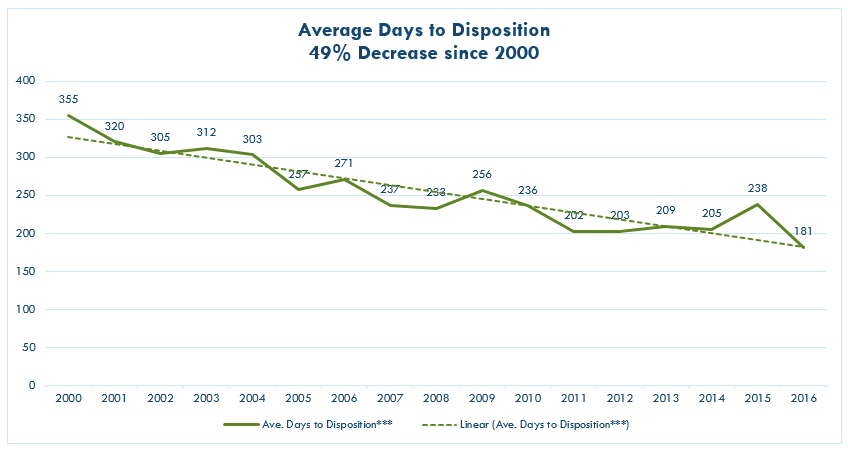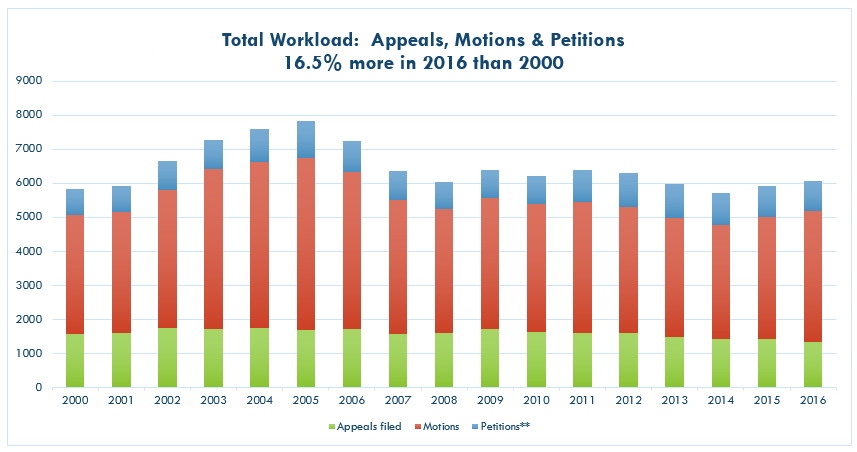About the Court of Appeals
The North Carolina Court of Appeals is the state’s only intermediate appellate court. Our judicial system has three levels of courts: Trial courts (District courts and Superior courts), the Court of Appeals, and the Supreme Court of North Carolina. Appellate courts work differently from trial courts, because this Court hears appeals in cases already tried, either by a bench trial or a jury trial, or before an agency or administrative law judge. Most cases are appealed from the trial level to the Court of Appeals, although a few specific types of appeals go directly to the Supreme Court of North Carolina.
Judges of the Court of Appeals are elected statewide and serve eight-year terms. The Court of Appeals currently has 15 judges who sit in panels of three judges to hear appeals, so there are always five panels. Cases are randomly assigned to the panels of judges. The judges also rotate panels frequently, so each judge can serve on a panel with each of the other judges over time. The Court of Appeals reviews the case on appeal for errors of law or legal procedure; it decides only questions of law – not questions of fact. The Court of Appeals does not receive new evidence or testimony from witnesses. Instead, this Court has a record on appeal which includes the evidence and documents presented at the trial of the case. Depending on the complexity of the case, a record on appeal and other documents might include hundreds or thousands of pages. The appellate court makes its decision based on a review of the record, briefs, and arguments presented by each side.
Each panel of judges usually decides 12 cases at each sitting, which is about every two weeks. After all three judges on a panel have reviewed the record on appeal and briefs, researched the law, and sometimes, heard oral arguments from the attorneys, the panel decides on the case. One judge on the panel writes an opinion which explains the facts and legal ruling. Review of a decision of the Court of Appeals is limited to those cases accepted by the Supreme Court. Depending on the case, an opinion may be just a few pages or it may be very long. On average, each judge must write about two opinions per week. Some people have compared this process to having to write two term papers a week! Despite this caseload, the Court of Appeals has reduced the average disposition time for cases by about one-half since 2000, when the Court increased from 12 judges to 15 judges.
As of 2017, the North Carolina General Assembly approved en banc hearings before the Court of Appeals. In an en banc case, all of the judges on the Court sit together to hear and decide the case. En banc review may be granted only in cases where it is necessary to secure or maintain uniformity of the Court’s decisions or the case involves a question of exceptional importance. A case can be heard en banc only if a majority of the judges on the Court vote to grant a party’s motion for en banc review. Therefore, all of the judges must consider each motion for en banc review filed, whether or not en banc review is ultimately allowed.
The dockets of cases, records, and briefs in cases on appeal (except juvenile cases and a few others where the law requires that the identity of the juveniles or parties be protected) are available online. The Court of Appeals’ opinions are available online.
Besides writing opinions from the appeals, the Court of Appeals also hears various types of motions and petitions and enters orders disposing of them. In fact, more motions and petitions are filed each year than appeals. Some motions and petitions will result in another case on appeal, and some are disposed of separately. The tables below illustrate the numbers of appeals, motions, and petitions filed over the years from 2000 until 2016 and the average case disposition times.

